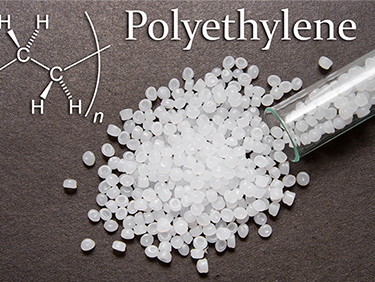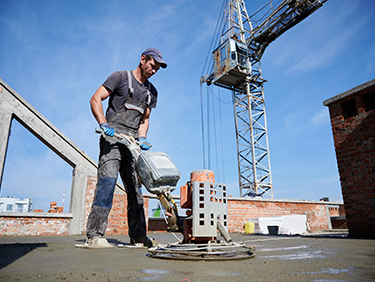SIDPEC
Solid performance persisting
-
Uncertain global factors at play shape export polyethylene prices
-
SIDPEC is benefiting from its comparative cost advantage. Strategic new projects and the acquisition of ETHYDCO potentially add value
HC Brokerage had recently issued an update note about Egypt’s industrial sector, through shedding the light on SIDPEC (SKPC EY). They focused on the company’s strategic new projects and their effect.
Nesrine Mamdouh, Industrials Analyst at HC commented that: “ Global supply/demand imbalances and uncertainty on geopolitical tensions and feedstock prices fluctuate global PE margins: The International Monetary Fund (IMF) estimates global GDP growth at 3.1% in 2024, which we anticipate to weigh down on petrochemical demand, picking up gradually starting 2025, as global GDP growth recovers. Additionally, the increase in PE global capacities, particularly in China and the USA, could pressure prices if global demand does not recover tandemly, leading producers to reduce their utilization rates. However, the geopolitical tensions in Gaza, Ukraine, and the Panama Canal restrictions disrupted supply chains and increased freight and insurance costs, posing upward pressure on global PE export prices. Regarding the feedstock prices of naphtha and ethane crackers, although oil and naphtha futures contracts are in backwardation, suggesting lower future feedstock prices, the uncertainty surrounding the geopolitical tensions makes futures prices prone to upward revisions. In the USA, one of the lowest-cost PE producers and exporters, future natural gas and ethane contracts suggest higher prices over the coming years, implying a decrease in the oil-to-gas ratio and a conversion in the comparative cost advantage of ethane over naphtha crackers, leading to more price conversion of exports from these regions to Europe. Accordingly, factoring in these developments, we expect global polyethylene (PE) prices to reverse the trend and increase in 2024 after normalizing in 2023 from their 2022 peaks. Despite these higher costs being passed through, to a large extent, to the final prices so far, we believe if geopolitical tensions persist, the current supply/demand imbalances will eventually curb the responsiveness of prices to increased costs, pressuring PE’s global margins.”
“ SIDPEC’s strong industry position and comparative cost advantage support its operations and profitability: The company is well positioned due to its decent local market share, allowing it to charge a local price premium over export prices, particularly when FX bottlenecks hampered Egypt’s PE imports. Furthermore, SIDPEC capitalized on its net positive FX exposure and its predominant EGP-denominated cost structure by importing grades of polymers (polypropylene, LDPE, and PVC, PE100) and selling them at a premium in the local market through its commercial unit. Moreover, implementing the feedstock formula in 4Q22, which tied it to an indexed PE price, helped SIDPEC hedge its margins against adverse convergent movements in feedstock and final prices, leading to consistent earnings. In our forecast, we assumed a gradual narrowing in the local price premium parallel to the gradual resolution of Egypt’s FX shortage and the resumption of PE imports. We anticipate the feedstock pricing formula to remain in place. We expect SIDPEC’s revenue to grow at a c7.6% CAGR over our FY24–28e forecast period, mainly driven by higher prices in EGP terms due to the EGP devaluation, despite normalized blended PE prices in USD. We expect COGS to grow at a CAGR of c7.9%, factoring in higher production costs, translating into an average EBITDA margin of c24% over our forecast period. We forecast net profit to grow at a CAGR of c10.7% over our forecast period. ” Mamdouh added.
“ Synergies from new projects and the acquisition of ETHYDO, represent an upside risk to our numbers: In our view, SIDPEC’s full acquisition of its 20%-owned subsidiary ETHYDCO through a share swap entails operational and cost synergies. In July 2023, the independent financial advisor (IFA) valued ETHYDCO at USD1.09bn or USD78.3/share (divided over 13.9m shares), using an FX rate of EGP30.9/USD, which yielded a value of EGP33.5bn. The IFA valued SIDPEC at EGP23.1bn or EGP30.6/share (divided over 756m shares), suggesting a swap ratio of 1.45:1, according to which SIDPEC would issue 877m shares in favor of ETHYDCO shareholders as part of a capital increase in return for acquiring the remaining 80% of ETHYDCO. The IFA valuation was based on the two companies’ FY22 financial statements. However, the deal was pending the acquisition of a 30% stake in ETHYDCO by Alpha Onyx Limited, affiliated with ADQ Holding, which delayed the transaction, without clear visibility on its implementation time, especially considering the FX uncertainty. However, we believe the resumption of talks will require a revaluation of the swap ratio to factor in recent developments and the two companies’ FY23 financial positions. Meanwhile, SIDPEC is contemplating the implementation of various projects. It has allocated an investment budget of USD57m in 2024, including contributing a 7.5% stake in the Egyptian Bioethanol Company (EBIOL), and USD5m in Egyptian Gas Cylinder (INCO) to export bioethanol and gas cylinders. Moreover, the company is currently bidding to establish a power station for EBIOL, which would enhance its FX proceeds. In addition, it secured technology to establish a combined heat and power unit to generate electricity, leading to partial electricity savings. Furthermore, SIDPEC signed a memorandum of understanding (MoU) to establish a methane production unit, using its available resources of CO2, Hydrogen, and land. The production of methane internally would serve as a fuel for boilers and reduce the cost of sourcing it externally. Also, it plans to establish a permanent facility to import ethane from the US by 2026, in partnership with ETHYDCO, GASCO, and a specialized private company for a total of 600,000 tons/year of ethane, where its share will be around 144,000 tons/year. The ample feedstock will allow SIDEPC to expand its production, estimated to cost an additional USD100-USD150/ton of ethane, equivalent to an extra USD2.3–3.4/MMBtu, according to our calculations.” Nesrine Mamdouh concluded.
About HC Brokerage
HC Brokerage is an affiliate of HC Securities & Investment– a full-fledged investment bank providing investment banking, asset management, securities brokerage, research, and custody services. HC Brokerage is an Egyptian registered company and member of Egypt’s Financial Regulatory Authority (FRA), and its registered address is 34 Gezirat Al-Arab St., Mohandessin, Giza, Egypt, Dokki 12311





